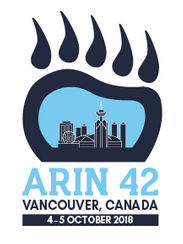 I had the opportunity to travel to Rosario, Argentina for LACNIC 30 meeting. Rosario is certainly off the path for most visitors to Argentina, but I certainly enjoyed my time exploring this city. Here are some notes and commentary from my week at the joint LACNIC / LACNOG meeting.
I had the opportunity to travel to Rosario, Argentina for LACNIC 30 meeting. Rosario is certainly off the path for most visitors to Argentina, but I certainly enjoyed my time exploring this city. Here are some notes and commentary from my week at the joint LACNIC / LACNOG meeting.
Policy Discussions
The LACNIC 30 policy discussions are being conducted under the new PDP which was adopted at the last meeting in Panama. There are two chairs of the PDP and they both perform the same functions, which are:
- To lead and prepare Public Policy Forum discussions
- To moderate the Public Policy List and the Policy Development Process in general
- To evaluate and suggest consensus in policy discussions
- To receive comments from LACNIC’s Staff in relation to different aspects of a policy proposal. These comments may include, among others, comments on the wording of a proposal, cost of implementing a proposal, legal aspects, and where to include a proposal within the LACNIC Policy Manual
With this new PDP there are also new time requirements are in the PDP for discussion. The chairs were careful to note that when there is a show of hands it is needed to declare consensus not majorities or votes. “We are not voting here, a policy reaches consensus when there are no refutable technical objections and is widely supported. LACNIC is no longer counting hands.”
Add additional restrictions on M&A legacy transfers. No M&A more than once per year, but up to 20% could be transferred within this year after M&A transfer.
New requirements and standards for abuse contacts. Resources could be withdrawn if you don’t comply.
This will require staffing changes for ISPs to comply with this policy. A number of organizations were opposed to the details in the policy. Concerns about the ‘additional information’ or example included in the policy, is it policy or is it just an example? Comparison were made to RIPE & ARIN verification of POCs. A large cost would be incurred to implement for both ISPs and for LACNIC. A lot of people said they agreed with the ideas, but not necessarily all the details.
Similar text submitted in all regions (ARIN-2018-4).
There was lots of discussion about the current text’s linguistic issues in Spanish version, specifically around the use of the word “including.”
English translation of current version:
Providing address space to third-party devices, including addresses for point-to-point links, and/or providing non-permanent address space to third parties for use in a network managed and operated by the original recipient of the assignment will not be considered a sub-assignment.
Providing address space for (semi-) permanent connectivity services, such as broadband services, is still considered a sub-assignment.
Related to with 2018-11. Creates the process where an ISP could “transfer” from within a larger block to different end-user so to avoid an end-user renumbering when an end-user wants to receive their own address. If the “transfer” didn’t fulfill a full assignment, LACNIC could provide an additional block to create a “full assignment.”
There were a number of arguments against because of the deaggregation which is done via this policy. There was concern about these transfers not being supported by different organizations. There were also concerns about how this may push commercial use in a way that is not desired.
Background: (2.3.3.4.3) was presented at the previous forum as a combined one and was requested to be split to gain clarity. 2018-8 is the other part.
“Simplifies” the end-user assignment policies to remove requirements for multi-homing. Removes requirement for receiving 8 /24s from an upstream. Renumbering is still required with 6 months to renumber, but can be extended by 6 months. This policy now requires that an end-user have an ASN under this policy. End-user can initially receive from /24 to /20.
There were some concerns that the policy now requires an ASN and that the current cost of an ASN causes some organizations to not connect via BGP due to these costs.
Allows a version of a policy proposal to continue to be discussed or to extend the discussion without having to roll the version number. Current PDP requires abandoning or rolling the version number after the time has expired for discussion.
Other Sessions
Opening Ceremony
The Argentina Universal Service Fund has funded a fiber network expansion that has reached 20k nodes serving more than 1000 communities. 400Mhz bands are being reallocated here for rural broadband. 900Mhz unlicensed band is also being considered for improving community access. LACNIC has grown to over 8400 members, up from just over 2000 in 2011 when the meeting was last held in Argentina. In Argentina, 40% of the population is not connected to the internet.
KeyNote – Harvey Allen, NSRC
New submarine route from Brazil to Angola went live just last week on Sept 18th, bring Africa & Latin America closer without having to go via Europe..
http://www.lacnic.net/innovaportal/file/3201/1/keynote-lacnic30.pdf
Small ISP Panel
One network deployment in a community in the far north of Argentina is using one ipv4 address per every 34 end users due to limited IPv4 supplies. IPv6 is served on mikrotik routers, but they have native v6 issues so the v6 is tunneled from the customer edge over our network and then handed off as v6 at peering/transit sessions. Reducing bandwidth transport costs by getting close to CDNs is essential to keeping their costs down.
http://www.lacnic.net/innovaportal/file/3202/1/panel-pequenos-isp-20180925-final.pdf
Transfer Panel
Since March 2016, there have been 20 in region transfers to date comprised of 192,512 IPv4 addresses.
http://www.lacnic.net/3278/47/evento/how-to-complete-a-successful-ipv4-transfer
Geolocation
Lacnic is publishing a geolocation database under its LAC-2018-3 policy.
https://ftp.lacnic.net/lacnic/dbase/lacnic.db.gz
They also have a tool call geofeeds which allows LACNIC members to create an feed that is published.
https://geofeeds.lacnic.net/
https://geofeeds.lacnic.net/geo/geofeeds.csv
This is a one-year trial. If it is used and well received additional features maybe added, if it isn’t used or isn’t useful we might delete everything.
RIPE has a geoloc attribute in the database, but it is often not used and if it is, it is often only updated once upon creation. We need something that is automatically generated and updated..new IPmap tool https://ipmap.ripe.net You can use RIPE atlas probes to do location triangulation.
 my ARIN 42 meeting report for Vancouver, BC.
my ARIN 42 meeting report for Vancouver, BC.
